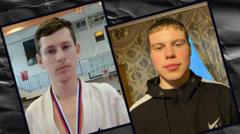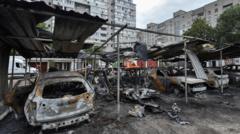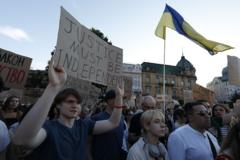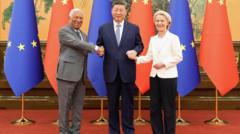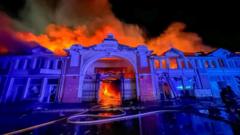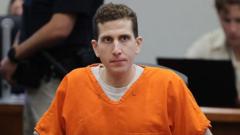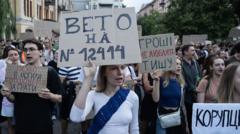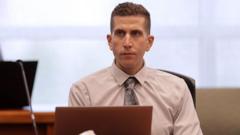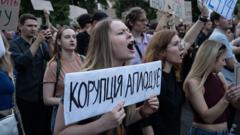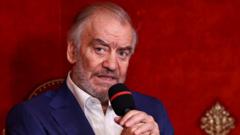In a vivid showcase of military might, Russia commemorates its WWII victory while reinforcing national pride and projecting strength to both allies and adversaries.
**Putin Leverages National Pride at Grand Victory Day Parade Amid Tensions**

**Putin Leverages National Pride at Grand Victory Day Parade Amid Tensions**
Military display in Moscow draws on historical narratives to galvanize support for the Ukraine conflict.
On a bright and brisk morning in Moscow, the Red Square transformed into a grand stage for Russia’s most ambitious Victory Day parade in years, commemorating the 80th anniversary of the Soviet victory over Nazi Germany. Spearheaded by President Vladimir Putin, the event was calculated to evoke national pride and display Russia's military prowess amidst ongoing tensions regarding the Ukraine conflict.
Astonishing crowds witnessed over 180 pieces of military equipment, including the latest artillery systems, drones, and armored vehicles integrated into Russia's ongoing military actions in Ukraine. The display also featured a formidable contingent of over 11,500 service members, who marched in formation, exclaiming “Hurrah!” as they passed the Kremlin's walls. Adding to the spectacle, a squadron of bombers painted the skies in the tri-color hues of the Russian flag, leaving many spectators in awe.
Foreign dignitaries, including Egypt's foreign minister, palpably felt the parade's intended effect. "This is very impressive — you should be proud," he remarked, embodying the dual facets of international admiration and domestic propaganda that the event sought to leverage.
The annual celebration, deeply rooted in Russian culture since the collapse of the Soviet Union in 1991, pivots on the narratives of heroism from WWII, now reframed to invigorate support for contemporary conflicts. In essence, while the parade was part of a storied tradition, it was simultaneously a clarion call to unite Russian citizens behind their government’s military endeavors and a stark reminder of the ongoing geopolitical landscape.
Astonishing crowds witnessed over 180 pieces of military equipment, including the latest artillery systems, drones, and armored vehicles integrated into Russia's ongoing military actions in Ukraine. The display also featured a formidable contingent of over 11,500 service members, who marched in formation, exclaiming “Hurrah!” as they passed the Kremlin's walls. Adding to the spectacle, a squadron of bombers painted the skies in the tri-color hues of the Russian flag, leaving many spectators in awe.
Foreign dignitaries, including Egypt's foreign minister, palpably felt the parade's intended effect. "This is very impressive — you should be proud," he remarked, embodying the dual facets of international admiration and domestic propaganda that the event sought to leverage.
The annual celebration, deeply rooted in Russian culture since the collapse of the Soviet Union in 1991, pivots on the narratives of heroism from WWII, now reframed to invigorate support for contemporary conflicts. In essence, while the parade was part of a storied tradition, it was simultaneously a clarion call to unite Russian citizens behind their government’s military endeavors and a stark reminder of the ongoing geopolitical landscape.

